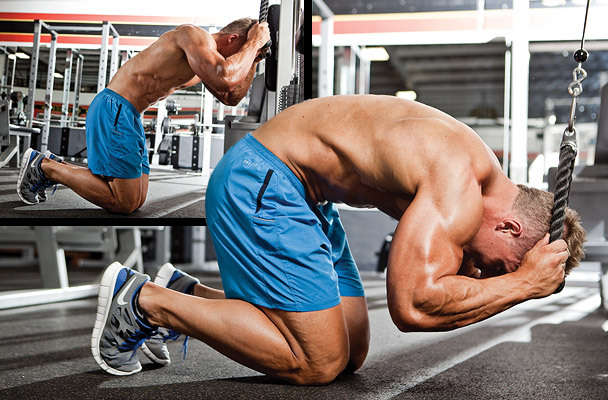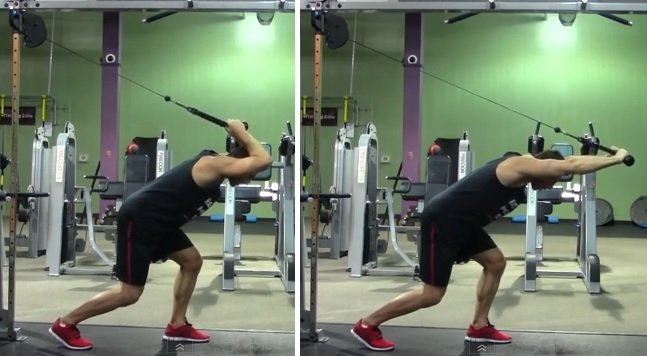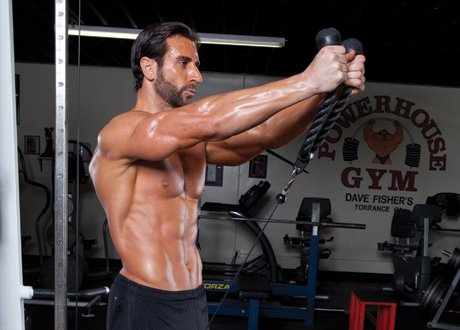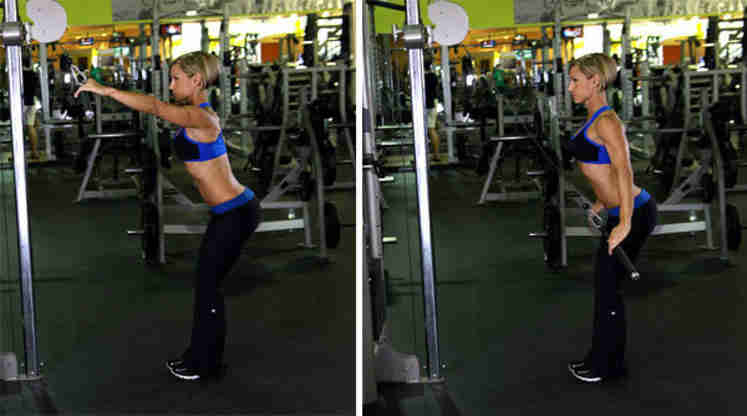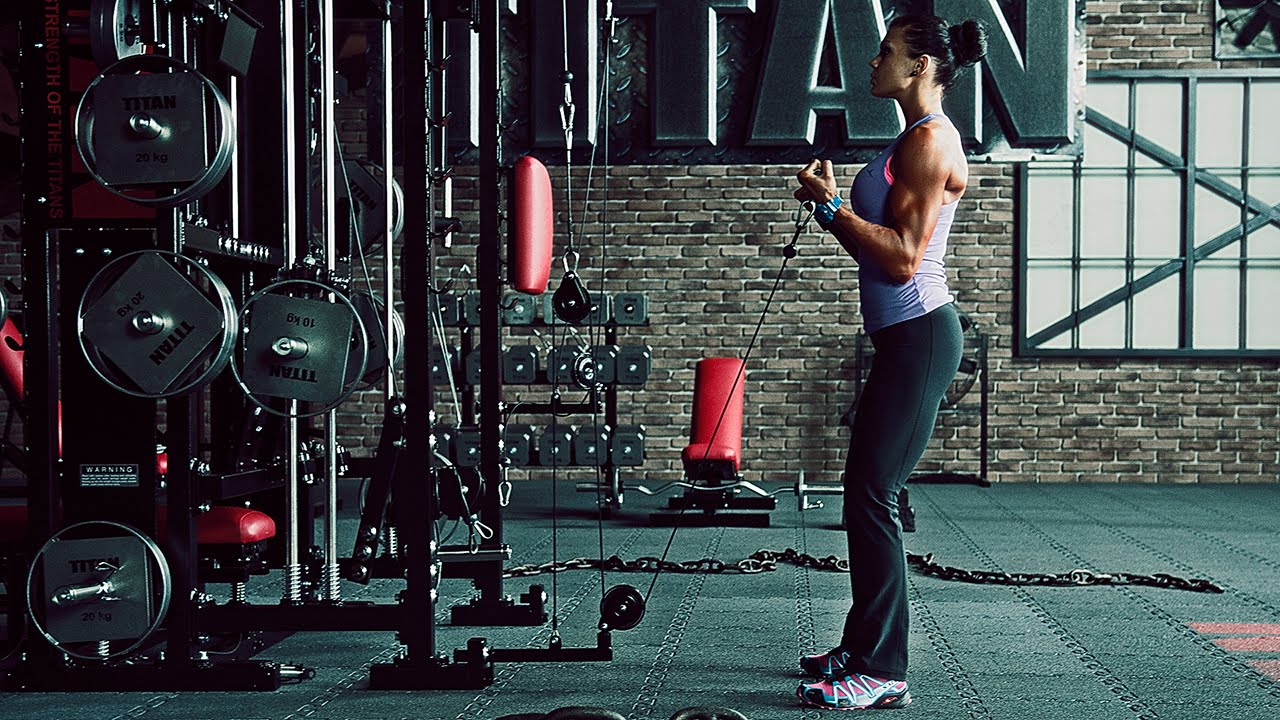
As we well know, the cable variation of most exercises offers an alternative, and often advantageous, option than the common free weight movement. The continual resistance throughout the motion of the exercise is often of great benefit, supplying universal stress to the muscle, a feat the free weight counterparts often can not achieve. With the cable station a common piece of equipment in gyms these days, how come the rope attachment seems to be left in the plastic box in the corner, or only reserved for triceps push downs?
I guess we should not tar everyone with the same brush, as I have seen gym goers using the rope attachment for a whole host of exercise variations, but this seems a very infrequent occurrence, with most opting for common small straight bar. Having a fixed supinated (palms up) or pronated (palms down) grip is common with many cable exercises, and for such exercises the straight bar would appear the best option, but what about cable exercises which use a neutral grip (palms facing inwards), or a dynamic grip with the rotation of the wrist during the execution? This is where the rope attachment can play a great role.
The rope attachment has two main benefits. Firstly, the rope is flexible, and therefore, so is your grip. This can be advantageous for exercises which can be further enhanced by the tweaking of grip positions during the exercise, and also for those who find the straight bar attachment too troublesome for their wrist joint. The second benefit of the rope attachment is the greater range of motion (ROM) it can offer. For example, performing a seated cable row with the rope attachment allows for the arms to be brought back further compared to the straight bar, allowing for a greater contraction of the back muscles.
As with most things in the fitness and bodybuilding world, it really all comes down to personal preference. Many will love the flexibility and versatility the rope attachment offers for many cable exercises, whilst many will prefer the fixed grip of the bars, or even just free weight alternatives. Be sure to try out your cable exercises with a rope attachment however, and see if it can offer you any benefits within your routine.
Below are some exercises which can incorporate the rope attachment to great effect.
Cable Crunch (Core Muscles)
Using the rope attachment for the cable crunch allows for greater flexibility of grip during the execution of the exercise, often proving much more comfortable than a straight bar. A good tip is to grip each end of the rope to either side of the head, but do not allow the rope or your hands to touch or hold onto the head during the exercise.
Over Head Triceps Extension (Triceps Brachii)
Placing a bench in front of a low cable pulley allows for the over head triceps extension to be performed with the rope attachment. This could be a wise choice for those with troublesome wrist joints, who find the straight bar uncomfortable. The rope also allows the freedom of switching the grip position to stress different regions of the triceps.
Front Raise (Anterior Deltoid Head)
The cable front raise is a great choice for directly targeting the front deltoid head. The rope attachment can enhance the exercise, allowing greater freedom of width between the two working arms, allowing the trainer to perform the exercise through a range of motion which feels most natural to them.
Straight Arm Pull Down (Back Muscles)
Commonly performed with a wide bar on a high cable pulley, the rope attachment can be successfully used as an alternative, allowing for greater freedom during the execution of the exercise, and increasing the range of motion (ROM) as the arms are free to pass further behind the body.
There are many more exercises which can be used with a rope attachment to great effect. Feel free to share any exercises you feel work well with the cable attachment by leaving a comment below!
